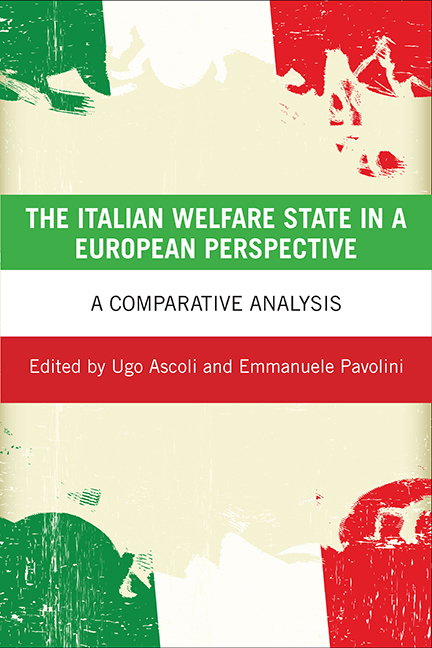six - Healthcare: difficult paths of reform
Published online by Cambridge University Press: 08 March 2022
Summary
Introduction
The Italian health system is distinguished by the fact that it has changed its welfare model fully four times in its 150 years of operation. From being ‘residual’ in the liberal age (1861–1921), it shifted to an ‘authoritarian meritocratic’ form in the fascist period (1922–43), to a ‘democratic meritocratic’ one in the years of the First Republic (1945–77), and finally to an ‘institutional universalist’ system in 1978. For a long period of time, therefore, primary responsibility for healthcare delivery was assigned to families, ecclesiastical networks, entrepreneurial paternalism and various forms of worker self-protection. Only with the institution of the Servizio Sanitario Nazionale (National Health Service; NHS) (Law No 833) was the state given primary responsibility, albeit with great difficulties and with major changes already in the 1990s. Indeed, decrees 502 and 517 of 1992/93, decree 229 of 1999, and Constitutional Law No 3 of 2001 introduced a regional and managerial regulation of healthcare similar to, and parallel with, the systems adopted in the same years by many other European countries (Enthoven, 1988, 1993; Vicarelli, 2004, 2005; Radcliffe and Dent, 2005; Saltman et al, 2007; Neogy and Kirkpatrick, 2009). As a result of these reforms, the NHS was structured on three levels: the national level, constituted mainly by the Ministry of Health; the intermediary level, represented by the assessorati regionali alla sanità (regional health departments); and the local level, which comprised 78 aziende sanitarie ospedaliere (hospital trusts; HTs) and 143 aziende sanitarie territoriali (local health authorities; LHAs) (Cergas, 2013). The latter now deliver services directly, and they are headed by a director general (appointed by the regional administration) who selects, on fiduciary bases, an administrative director and a healthcare director. While all hospital personnel are dependent on the NHS, general practitioners and paediatricians are free professionals working on contract to the NHS.
Also part of this difficult process of constructing a public healthcare system have been the policies of the 2000s, as well as the measures taken in response to the economic crisis that has afflicted Italy since 2008.
- Type
- Chapter
- Information
- The Italian Welfare State in a European PerspectiveA Comparative Analysis, pp. 157 - 178Publisher: Bristol University PressPrint publication year: 2015
- 1
- Cited by

